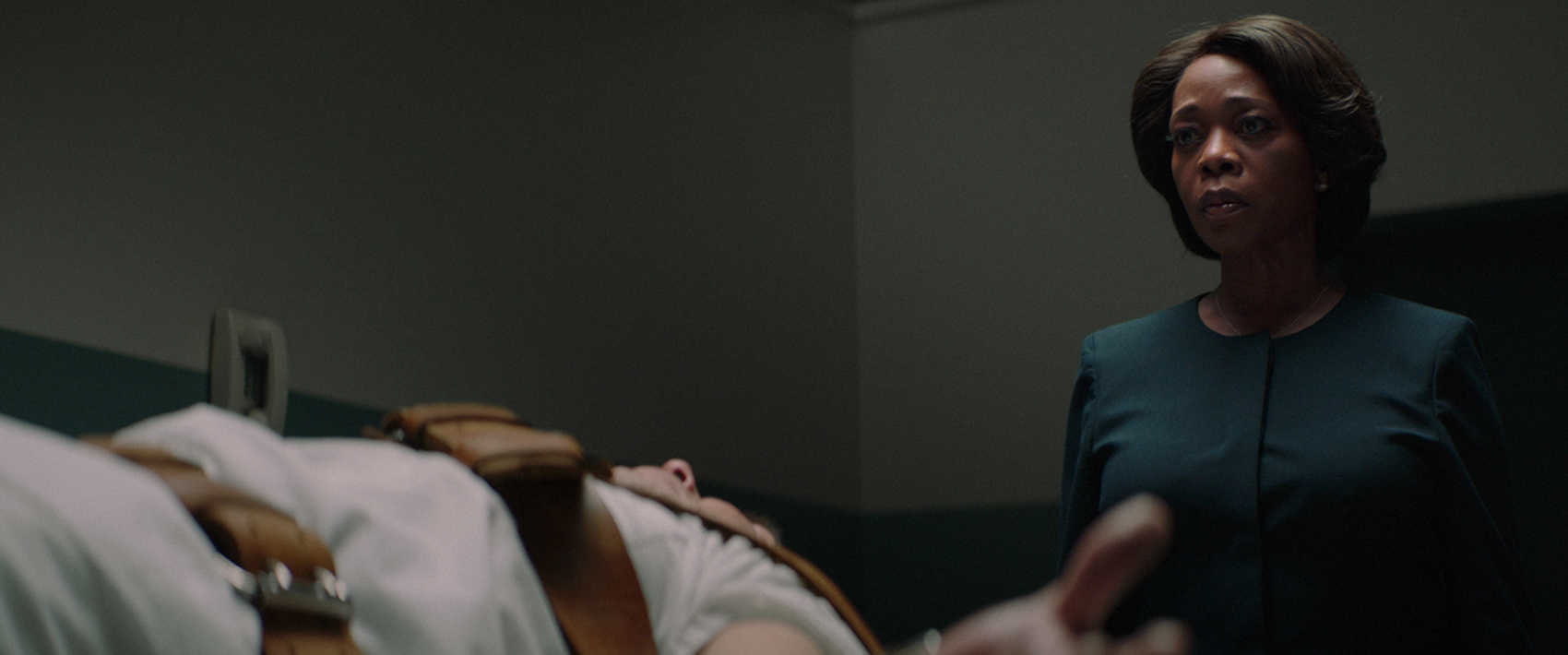
The best films of 2019 to enrich your year ahead
2019 saw outstanding and challenging film-making notable for tackling some of the most controversial topics of our time. From real-life government conspiracies to racial and class conflict, the films detailed here are notable for being both engaging and challenging. These are the films you will want to watch to enrich the year ahead.
Apollo11
It has been half a century since the Apollo 11 mission put the first man on the moon. Director Todd Douglas Miller faithfully recaptures the program with a masterful piece of documentary filmmaking. To produce the documentary the filmmakers sifted through an archive of over 11,000 hours of footage. The results of that deep level of research, show on the screen. The documentary delivers a startlingly feeling of immediacy from the initial launch of the space shuttle at Cape Carnival, Florida. This year’s 50th anniversary of the moon landing, imbues the documentary with an even greater sense of relevance. And despite the outcome of the mission being well known, the documentary still conveys a sense of the excitement and majesty of the program. The documentary is centred on four key moments during Apollo11: the launch, the moon landing, the lunar module reconnecting with the Columbia spacecraft and finally the return into the earth’s atmosphere.
The Report
Scott Z. Burn’s latest film puts the spotlights on the CIA’s enhanced interrogation techniques following 9/11. Unlike Kathern Bigelow’s Zero Dark Thirty which featured similar material, The Report is far more critical about the necessity of such tactics. The film stars Adam Driver as Daniel Jones, the author of the Senate Intelligence Committee’s report on the CIA’s activities. Covering Jones journey from investigating the reports of torture, through the intelligence agencies attempt to conceal the committee’s findings. The film begins following the 9/11 attacks and covers the majority of the period of the Bush presidency. During this period the CIA authorises a torture program, that is almost certainly in violation of a number of treaties that the United States has agreed to. The participants in the torture program are suspected terrorists from Pakistan and Afghanistan, who have been captured and removed to black sites located in countries allied to the U.S. There they are subject to a range of enhanced interrogation techniques including water boarding, being sealed up in boxes and exposed to loud heavy metal music through-out the night. It is known that at least one person died as a result of the program, in addition a number of the suspects turned out to be innocent. As the film points out, the torture program resulted in no actionable intelligence. Despite this the program was heavily championed by neo-conservatives and defined by John Yoo, a justice department official, in a memo. While the Bush administration was responsible for the torture program, the Obama administration was culpable in their attempt to cover it up. John Brennan directed the CIA to spy on the senate staffers and used intimidation tactics against Dan Jones in order to prevent the publication of eth report. The films convey how the Obama administration has little interest in uncovering the dark secrets of the Bush administration and that it is up to Washington ideals like Dan Jones to bring the truth to light. The consequences for this idealism can be high. Superbly acted and directed, The Report offers a damming indictment of the value of the tactics employed by the CIA and the American political system.
Luce
Julius Onah’s film Luce is a tort, psychological thriller that looks at the consequences of fireworks found in the locker of a talented black student called Luce (Kelvin Harrisson Jnr). The film looks at the expectations that we place on gifted black students and how they are expected to conform to expectations. Luce is defended to the school by his uber-liberal adoptive parents played by Tim Roth and Naomi Watts. The film begins with a teacher confronting Luces’ adopted mother (Naomi Watts) with a disturbing report he has written, alongside illegal fireworks that have been found in his locker. We discover the Luce was a child soldier from Eritrea until he was brought to the United States. This opens the question as to whether the teacher’s suspicions are exaggerated or if the promising student could be capable of much greater violence. The brilliance of the film is that we are never sure right up until the end which is the truth. It does soon become clear thought, that Luce almost certainly knows more than he is letting on. Luces’ parents vacillate between suspicion of their son, to defending him against a teacher, who appears to have her own motivations to take down Luce.
Official Secrets
Official Secrets covers similar ground to the The Report but this time look at the events leading to the invasion of Iraq. In Official Secrets Catherine Gun, played by Keira Knightley, is a whistle-blower who reveals that the United States and the United Kingdom governments have been attempting to blackmail United Nations diplomats in order to obtain their vote for the Iraq War. As viewers we know that Gun’s attempts to stop the war in Iraq are ultimately futile. Gun herself will find herself under investigation. The film begins with Gun working as an analyst for GCHQ. During the course of her work she is tasked with assisting the United States in finding material which can be used to coerce smaller United Nations members states to vote in favour the invasion of Iraq. Gun instead chooses to pass the information anonymously to the Observer, which in turn publishes it as front page news. An internal investigation ensues, and it is soon Gun which is the firing line. Most devastatingly, the information that Gun has revealed has little impact on the decision to invade, make her noble act, ultimately futile. Official Secrets does an excellent job of portraying the fact that Gun’s unsuccessful attempt to stop the war, mirrors that of millions of other protesters. Historically huge protests against the invasion of Iraq ignored by the Blair government. As a consequence, many can empathise with the plight of Gun who feel that the war was unstoppable from the start.
American Factory
American Factory is a longer form, follow-up to the documentary short The Last Truck: Closing of a GM Plant. The 2009 documentary depicted the closing days of a factory in Ohio. The documentary has received a large amount of attention, owing to its producers, Michele and Barack Obama. Revisiting the manufacturing industry was a key issue for the Obama administration, and as American Factory makes clear it is an issue that Obama is still interested in addressing. In American Factory film-makers Steven Bognar and Julia Reichert revisit the factory as it is reopened by a Chinese manufacturing company. As would be expected this creates the perfect conditions for a clash of cultures. American workers and their new Chinese management are odds through-out, in particular by the desire of the workers to unionise. The documentary begins with the 2014 purchases of a GM automotive plant in Dayton, Ohio which is bought by a Chinese auto glass manufacturer called Fuyao. The Ohio factory has been closed since 2008 and so the news is received with great enthusiasm. The potential of influx of new jobs is viewed as particularly important as the state has been beset by high unemployment. In order to entice the Chinese manufacturer, the investment has been subsidized with $6 million in incentives. Unfortunately, this initial enthusiasm is quickly diminished in the face of a Chinese work culture that emphasizes uncomplaining submission and seven-day work weeks. It is clear that the Chinese manufacturer will do whatever it takes in order to increase productivity. Safety considerations and breaks are considered of far less importance. Most problematically management stops any attempt by staff to unionise. This nuanced documentary goes beyond simply commenting on the obvious issues of class and capitalism presented. Instead showing the human faces of both sides that are involved.
The Farewell
The Farewell uses as its source material an episode from podcast This American Life which told the real-life story of director Lucy Wang’s family as they aimed to conceal a critical diagnosis from Wang’s grandmother. When Wang’s family finds out that her grandmother is terminally ill, they decide that they will hide the truth from her. The problem that faces the family is then how to give everyone in the family an opportunity to say goodbye to the grandmother with revealing the truth. A complicated plan is hatched involving a family wedding, which Wang’s character played by Awkwafina, is reluctantly involved in. This at first seems like a natural setup for a dramatic comedy as convoluted means to conceal the truth are concocted. And while there is an element of this, the film is ultimately about much more. It becomes a lens through which to look at the difference between Americanised Awkwafina and the older generations of the family.
The Souvenir
Set in 1980’s London, Joanna Hogg’s The Souvenir stars Honor Swinton-Byrne as Julie, a film student who becomes involved in a romantic relationship with an older man. The romance upsets not only Julie’s studies but also takes to her the emotional brink. Stylishly shot The Souvenir is most remarkable for its ability to fully capture all of the passion and emotion of a first love. The Souvenir is notable for clearly being Joanna Hogg’s most autobiographical work to date. While Hogg’s films often appear to draw closely on her own experiences, in The Souvenir the feeling of verisimilitude is even stronger. The film often has the quality of feeling as if it has been taken directly from Hogg’s own youthful diary. This is compounded by the casting of Swinton-Byrne, who is Hogg’s goddaughter and having Julie’s mother played by Swinton-Byrne’s real-life parent Tilda Swinton.
Cold Case Hammarskjold
Cold Case Hammarskjold covers one of the most mysterious deaths in political history – the plane crash which took the life of United Nations secretary-general Dag Hammerskjold. The plane crash which occurred in 1961 took the life of the secretary-general, as well as the majority of the crew on board. As of yet the cause of the crash remains unsolved. Over the years there have been a wide variety of theories presented but none has ever proved definitive. The case proves fertile ground for director Mads Brugger, who is best known for mockumentaries like the The Ambassador. In Cold Case Hammarskjold we follow Brugger as he attempts to discover the truth behind the crash. The documentary begins with Brugger going to a number of dead ends and it looks the truth will remain elusive. However, as evidence is unearthed it appears that the truth behind the plane crash may be something much greater than expected. The crash occurred while Hammarskjold was on a trip to the Republic of Congo. There he would attempt to negotiate a truce with Moise Tshombe, who is the leader of a rebel faction. The plane crash took place in what was then Northern Rhodesia. From the start observer were suspicious about the cause of the crash. The secretary general had accumulated enemies among the colonial powers of Great Britain, France and Belgium for his support for the rights of African countries. He was also viewed as a potential economic threat, thanks to his opposition to the mining that was taking place in the Congo. Brugger first decides to focus on the plane crash itself, choosing to examine the evidence of first hand witnesses who were largely ignored at the time because they were the local people from the towns. This testimony is corroborated by what appears to be the bullet ridden tail of the airplane. In turn this strongly suggests that the plane may have been shot down by a jet fighter flown by a Belgian mercenary Jan van Rissenghem. The filmmakers posit that Jan van Rissengem was in turn working for a military organisation known as SAIMR, which was known for doing the dirty work for MI5 and the CIA. The films make a controversial claim that SAIMER also attempted to spread the HIV virus among the black population in Africa, in order to reduce it below that of the number of whites. Cold Case Hammarskjold feels particularly relevant in our current conspiracy riddled environment. While the documentary begins with the same self-referential, wry tone as Bruggers other documentaries, it soon ascends into something far more serious. It pulls back the curtain on how exploitive interests can circumvent well intentioned individuals, using the most heinous means available.
Honey Boy
In Honey Boy Shia LaBeouf reflects on his childhood in what appears to be part film and part therapy session. The film stars Lucas Hedge playing a character Otis which closely matches that of LaBeouf. Lucas looks back on the impact that his troubled childhood has had on his adult life. In particular it examines the psychological impact of the abuse he has suffered at the hands of the father. What makes Honey Boy most fascinating is that the father character is played by LaBeouf himself. As Honey Boy closely matches LaBeouf’s own child star upbringing, the choice to take on the role of his own real-life patriarchal tormenter makes for very interesting viewing. Given such an option it may have been tempting to engage in some filmic payback. Instead the LaBeouf’s portrayal of his father is far more sympathetic. Overall, it’s an outstanding performance by LaBeouf and will have many people reassessing this sometimes-scorned actor.
Midnight Family
Director Luke Lorentzen’s Midnight Family depicts the Ochoa family as they seek to profit from Mexico City’s outsourced healthcare industry. In Midnight Family the Ochoa patriarch and his sons, cruise around Mexico City’s suburbs in their own ambulance. Picking up patients who need a ride to the hospital, the film paints a dark picture of the economic gaps in Mexico and how established institutions are crumbling. Amazingly Mexico City, with a population of 9 million people, only has 45 public ambulances. This means that most people need to use one of the cities many privately own ambulances. The family is headed by Fer, who has his own medical conditions to contend with. It is in fact, his seventeen-year-old son Juan, who is really in charge of the operation. The father and son team wait each night for calls of a new accident. They then rush through the streets of Mexico City; it attempts to beat out rival private ambulance crews. Once they pick up the injured patient it’s a mad rush to the hospital in their van. The frantic rush to reach the victims, is in part driven by them by their desire to help save their passengers from what are sometimes devastating injuries. But it is also clear their speed is also motivated by ensuring that they are the recipients for the payment for the pick-up. Getting to the injured victims first is only the start of the problems faced by the Ochoa family. Their “clients” are frequently reluctant to pay once they are at the hospital, haggling over the delivery fee. They are also unable to pick up people who have already been reached by one of the city’s public ambulances and are harassed by bribe seeking police officers. The hero of the piece is Juan, who attempts to navigate through all of this chaos, and keep his family’s life together.
Leaving Neverland
Leaving Neverland was one of the most controversial documentaries to feature at this year’s Sundance. The documentary examines in depth the sexual abuse allegations made against pop idol Michael Jackson. In the documentary James Safechuck and Wade Robson share in detail the abuse they allege they suffered as boys at Jackson Neverland home. The documentary is not only a damming depiction of the abuse that Jackson inflicted on boys, but also a show the wider impact that this abuse had one the families of the victims. It also shows how celebrity hood helped to facilitate and conceal what was taking place. The documentary is harrowing viewing, but it does show sharing these experiences can be a cathartic experience for the victims, even if justice is not ultimately served.
The Last Black Man in San Francisco
San Francisco has become a symbol of the gentrification and economic disparity that has impacted many major cities in the United States. Those issues are entertainingly captured in Joe Talbolt’s The Last Black Man in San Francisco. The film starts Jimmie Falls playing the semi-factual Jimmie. Jimmie a black man in his 20’s pines for his lost family home in Filmore District. Jimmie claims that the grand Victorian house was built in 1946 by his grandfather. The drama begins when that home becomes empty after the white family who own it vacates. Jimmie and his friend decide that it’s time to move “home” and bring the house back to its former glory. Taking up residence in the property, it is a change for the better for Jimmie, who was previously living in a tiny bedroom in the run-down neighbourhood of Hunters Point. Talbot is a fifth-generation resident of San Francisco, and both his life and frustration with the city is made clear.
Joker
Todd Phillips Joker delivers a brutal and nihilistic depiction of the birth of Batman’s foe. The film is driven by an incredibly compelling performance by Joaquin Phoenix who takes on the role of the Joker. Phoenix’s joker presents are psychological torment with a raw physicality. His character is bone thin and abused at every turn. The film begins as the Joker-to-be Arthur Fleck dreams of becoming a stand-up comedy. Unfortunately for Fleck he is cursed with an inability to understand what other people will find funny. His own descent into madness, is mirrored by Gotham city which appears itself to be falling apart. Fleck’s character moves from victim to violent preparator, as he chooses to take revenge on a world that has done him wrong. The comparisons to the classic Taxi Driver are obvious and Joker has a distinctly 1970’s feel to it. At the same it seems highly relevant for our modern period where loners inflict unspeakable and pointless violence on what seems like a daily basis. The Joker might not be a hero, but he is certainly symbolic of where we are as a society.
Knock Down the House
Knock Down the House documents four female candidates for Congress during 2018. Among these is Alexandria Ocasio-Cortez, one of the best known and social media savvy politicians of our time. The documentary makes for fascinating and suspenseful viewing, even though the outcome of the election campaigns of the four politicians is already known. Director Rachel Lears selected the four subjects of her documentary following the 2016 presidential election. To find the right candidates she contacted Justice Democrats and Brand-New Congress who planned to run unknown candidates for the midterms in 2018. The four candidates that Lear chosen were selected because they combined progressive politics with an interesting backstory. In addition, all four were up against well-established opponents who appeared to be very difficult to beat. One of the shared motivating drives of all of the four women is there sense of being fed up with the current Democrat representative. In some cases, there also much more personal motivations for running for office. Alexandria Ocasio-Cortez appeal is immediately obvious, notable for her resilience in the face of opposition and her confidence. Her opponent Joe Crowley has held office for almost two decades and at first looks like to win again. Alexandria Ocasio-Cortex previous job as a bartender makes her seem unlikely to succeed against the experienced and well-known Crowley. However, it quickly becomes apparent that it is Crowley that is going to be put on the back foot. Crowley is unprepared for Ocasio-Cortez and her eventual win seems pre-ordained in retrospect. Overall, the documentary does a powerful job of capturing the motivations behind these candidates run for office and the challenges facing them to succeed.
Ad Astra
Ad Astra is a sci-fi drama that tells that story of one man’s search for his lost father. Thematically dense it can be read as commentary on how all men are destined to become their fathers or how far will we go to find the truth about ourselves. The film stars Brad Pitt as Roy McBride in what many have called a career best performance. Set in the near future at a time when space travel has become far more common place, McBride is the uber-astronaut. Notable for his steely cool composure, it is said his BPM never reaches over 80. This composure is put to the test at the start of the film, when an accident aboard a space platform sees his character plummet from space to earth. The accident aboard the space station is attributed to a power surge which is destined to devastate all of earth. The source of this surge appears to be coming from an anti-matter device which is located near Neptune. This location is also the last place that anyone has heard of from a famed space mission called The Lima Project. That mission was an attempt to reach the farthest reaches of the solar system in a search for intelligent life. Headed by McBride’s’ father Clifford (Tommy Lee Jones). Roy had previously believed that his father was dead. Now it seems that his father may be alive and also attempting to attack Earth through the anti-matter device. Roy’s superiors decide to send him to Mars where he will be able to send a message to his father. Roy’s journey first to the Moon, then Mars and finally deep space, is thrilling. His unrelenting desire to discover the truth has deadly consequences for those around him. The final destination of that quest delivers both answers and more questions. Ad Astra is one of the rare films that combines a deeply philosophical underpinning with true Hollywood style entertainment.
High Life
The premise of High Life begins with a standard sounding sci-fi premise; a group of convicts are being sent into space in order to take advantage of the power of a black hole. But in the hands of director Claire Denis, the film quickly develops into a unique study in fear. What becomes apparent to the crew, is that they are engaged in a suicide mission. The tension aboard the spaceship is conveyed through shifts between sustained periods of non-action, broken up by short intense violence. At the core of the film is the conflict between the ship’s doctor (Juliette Binoche) who wants to extract sperm from the males to impregnate the females, and Monte (Robert Pattinson) who refuses to go along with this scheme.
Us
Us begins in 1986 where we find a young girl, Adelaide visiting a fairground in Santa Cruz with her family. Upon entering a hall of mirrors, the young girl sees something which terrifies her. The film then moves forward to the character now an adult, visiting once again the beach, along with her and two children. It is clear that Adelaide is still deeply traumatised by the events of her childhood. Things take a darker turn when a mysterious family arrives at the summer home. Us plays with the audience about the true meaning of these mysterious visitors.
Bait
The film depicts a battle at the heart of a Cornish fishing village. At the stake is both the present and the future of an entire way of life. At the same time Bait serves a paean to a lost past. At the centre of the drama are two brothers Martin (Edward Rowe) and Steven Ward (Giles King). Steven has chosen to make his money from the tourist trade, taking visitors on sight-seeing trips on his father’s boat. Martin in contrast sticks to the old ways, selling the fish he has caught door to door. Martin’s distress at the loss of his traditional way of life is compounded by the sale of the family home to outsiders. The issues presented in Bait seem particularly timely given Brexit. However, the problems facing the past and future of this fishing village are almost certainly much deeper rooted. Filmed on 16mm stock, Bait has a grainy realism, which imbues it with a sense of timelessness.
Uncut Gems
Directors Josh and Benny Safdie expertly deliver another nerve wrenching experience with Uncut Gems. Adam Sandler, in what many have called the best performance of his career, plays a hard-hustling NY diamond dealer. We watch as Sandler’s Howard Ratner uses a combination of bluff and charm, to wheel and deal his way through an increasingly complicated series of situations. This includes placing complex bets, negotiating with debt collectors and managing the demands of a mistress and a wife. At the centre of the plot is Ratner’s ill-gotten acquisition of a black opal. Everything about Uncut Gems is unsettling, from the soundscape, to the dialogue, to the action on screen. For some the overall experience may be too anxiety inducing to be enjoyed, for others it will be a thrilling ride that is unmatched by any other film this year.
Clemency
Chinoye Chukwa’s Clemency takes a sharp eye to one of society’s most challenging issues; capital punishment. The film showcases the relationship between a death row prisoner (Aldis Hodge) and a prison warden Bernadine (Alfre Woodard). Clemency shows how both of these characters deal with the upcoming execution. The film begins with Bernadine preparing for an execution. We see her professionally going through a mental checklist, as she attempts to retain a steely professional demeanour. It is clear that Bernadine has at least some traces of doubts about the process that she is part of. These doubts are compounded after the lethal injection to the prisoner goes wrong. Bernadine needs to bury these concerns and the guilt she clearly feels, as she prepares for the next prisoner to be executed. One of the most compelling elements of the film, is watching Bernadine try to keep her inner physical conflicts concealed beneath a stiff professionalism. Self-medicating through alcohol, she is unable to connect with her caring husband played by Wendell Pierce. Clemency captures Bernadine’s inner torment with minimal dialogues. The quietness of this film only helps to fuel its angry intensity however, as it moves towards its inevitable climax. It would be easy for Clemency to become an overwrought portrayal of the ills of capital punishment. The film doesn’t take this easy road, however, instead focus on the psychological impact that taking a life has on everyone who is involved in the process. Clemency is an intense experience that stays with you.
The Mule
At age 88 Clint Eastwood demonstrates that he is still a force to be reckoned with in his drug trafficking film The Mule. Based loosely on a true story, the mule stars Eastwood as Earl Stone a horticulturalist in need of cash. Circumstances eventuate which lead Earl into acting as a mule for the Mexican Cartels. The fact that Earl is an old, white male in a beaten pickup truck makes him invisible to police looking for your Latino males. Earl’s character is not without his challenges for audience. He is frequently racist and sexist, and unrepentantly so. The point that the film makes is that all of the male characters, whether they are drug dealers, cops or horticulturalists, base their value on job, and more fundamentally their ability to earn money. These workaholic traits mean that they neglect their family. What makes this doubly interesting is Eastwood’s own reputation as a workaholic. At an age when most men are long retired, Eastwood, already incredibly wealthy, continues to make films. The Mule provides an insight into how work drives men like Earl – and Eastwood himself – to continue forward, even at great sacrifice.
Marriage Story
Director Noam Baumbach’s Marriage Story depicts the implosion of a marriage. What starts as a relatively harmonious breakup, progresses into a far fiercer battle over the custody of a child. The films begin with the two lead characters Nicole (Scarlett Johansson) and Charlie (Adam Driver) reciting all of the things that love about one another. From this start we would be led to believe that this attractive couple are involved in the perfect relationship. It soon becomes clear though that these accounts have been elicited by a divorce mediator. While this couple may have once loved each other, their deeply troubled relationship is now moving through the process of divorce. Charlie’s “New York family” is splitting, with actor Nicole leaving for Los Angeles where she will star in a TV pilot. Despite the breakdown in their relationship, Charlie is convinced that the move to Los Angeles is temporary. That proves to not be the case as both Nicole and their son Henry become settled in their new life. Marriage Story progresses into a legal procedural as both sides battle out, using increasingly aggressive tactics the films protagonists shift between emotional pleadings to win-at-all-costs, as the pressure of the divorce and future custody mounts. Driver and Johansson both deliver brilliant performance, showing both the dark and light of these flawed characters.
Monos
Monos tells the story of a teenage band of Columbian guerrillas who progress into chaos. The story begins with the blindfolded teenage guerrillas playing a game of football. We learn that these “Monos” are tasked with guarding an American prisoner being held for ransom referred to as the Doctora. The band is led by the Messenger, who instructs the teenagers that they work for the Organisation and this is their family. The Messenger departs the camp leaving the young fighters alone. This devolves into drunken revelry, drug taking and fighting. As factions within the group fight with one another for dominance, they are eventually driven out of the camp and into the forest. With its hyper-real visuals, lack of geographical markings and eerie soundtrack, Monos has a sense of abstraction which makes it feel like a mythic tale, rather than one firmly grounded in reality. The end effect is a film which is incredibly atmospheric and deeply haunting.





























